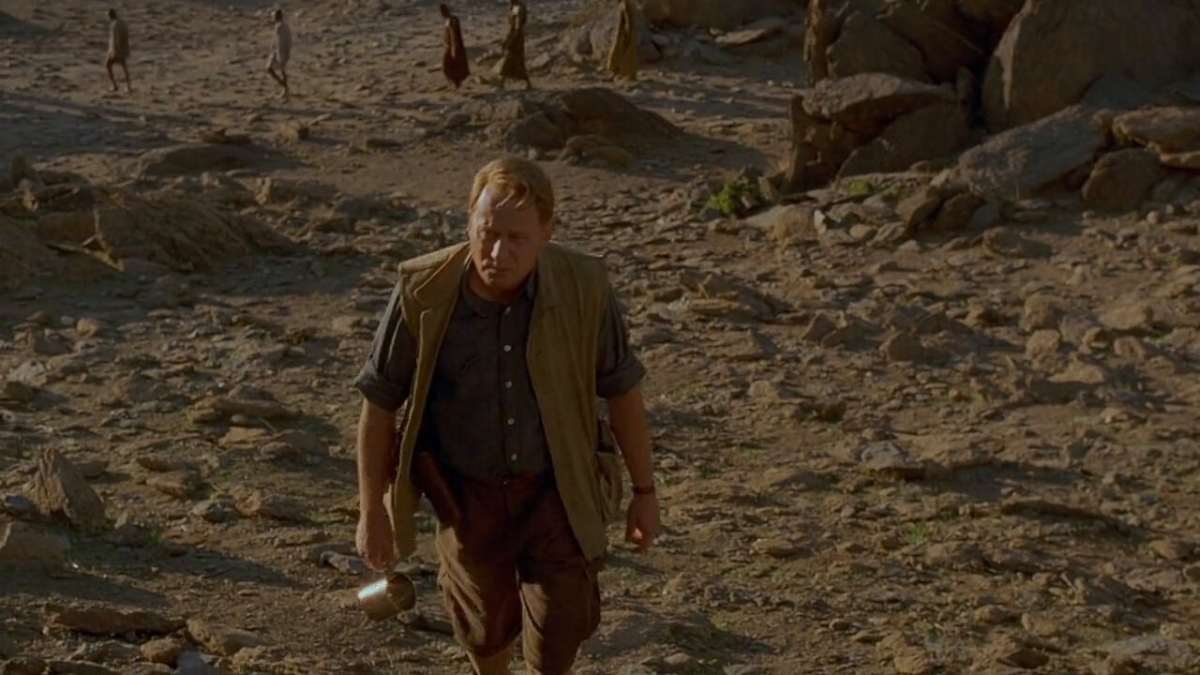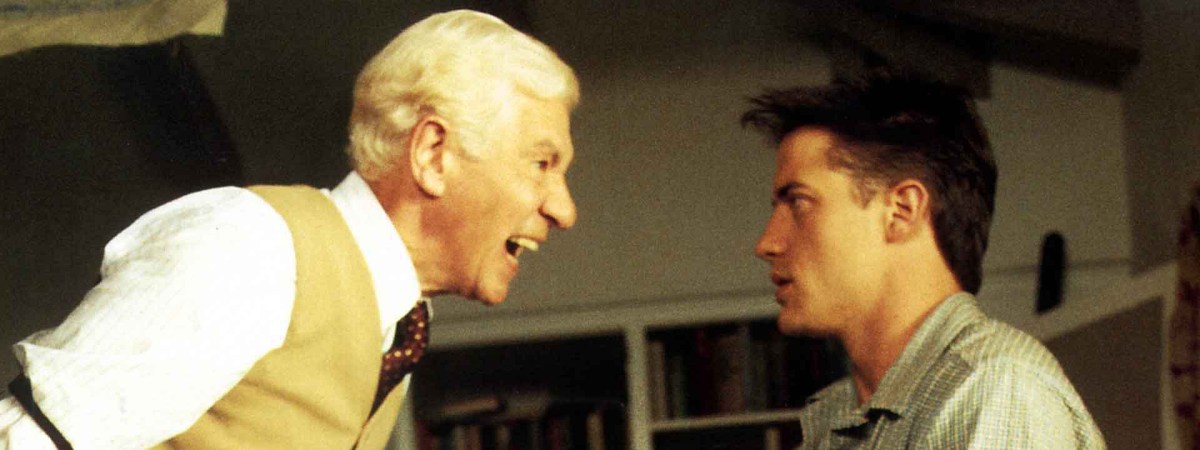‘God was with him’: Actor James Woods describes harrowing wildfire. This gripping account details Woods’ harrowing escape from a devastating wildfire, highlighting his unwavering faith and remarkable resilience. We’ll explore the specifics of the event, analyze his emotional response, and examine how his faith shaped his actions during this life-threatening ordeal. Prepare to be captivated by a story of survival, faith, and the incredible power of the human spirit in the face of unimaginable danger.
The narrative unfolds through a detailed timeline of Woods’ experience, revealing the escalating intensity of the wildfire and the critical moments that determined his survival. We’ll examine the psychological impact of such a traumatic event, comparing his experience to others who have faced similar natural disasters. Ultimately, this account prompts reflection on the role of faith in times of crisis and the importance of preparedness in the face of natural calamities.
James Woods and the Wildfire: A Story of Faith and Survival: ‘God Was With Him’: Actor James Woods Describes Harrowing Wildfire
Actor James Woods’ harrowing experience surviving a wildfire, recounted with the impactful statement “God was with him,” offers a compelling case study in faith, survival, and the human response to natural disaster. This analysis explores the details of his account, examining the role of faith in his experience and comparing it to broader themes of resilience in the face of extreme adversity.
James Woods’ Account: Faith and the Wildfire
Woods’ declaration, “God was with him,” acts as the emotional core of his narrative. It transcends a simple statement of survival; it signifies divine intervention and unwavering faith in the face of imminent danger. The use of religious language, while potentially divisive, powerfully conveys the intensity and terror of the wildfire experience, highlighting the overwhelming sense of helplessness and the subsequent relief attributed to a higher power.
His faith, according to his account, directly influenced his actions, providing him with the strength and resolve to navigate the crisis. This contrasts with some secular accounts of disaster survival, which often focus on rational decision-making and physical prowess, though many accounts also incorporate elements of luck and unexpected assistance. While some survivors might emphasize preparedness and self-reliance, Woods’ narrative underscores the significant role of spiritual belief in his survival.
The Wildfire Event: Context and Details
The specific wildfire event and its details, as described by James Woods, are crucial to understanding the context of his experience. While precise details may vary depending on the source, a general Artikel can be constructed, focusing on the location, timing, scale, and the progression of events. A timeline, presented below, offers a structured view of Woods’ ordeal, highlighting key moments of danger and escape.
This detailed reconstruction will allow for a more comprehensive analysis of his survival.
| Time | Event | Location | Emotional Response |
|---|---|---|---|
| (Time – needs specific data from Woods’ account) | Wildfire ignition and initial spread | (Location – needs specific data from Woods’ account) | Fear, initial awareness of danger |
| (Time – needs specific data from Woods’ account) | Rapid fire advancement, escape becomes necessary | (Location – needs specific data from Woods’ account) | Panic, desperation |
| (Time – needs specific data from Woods’ account) | Encountering immediate danger (e.g., flames, smoke) | (Location – needs specific data from Woods’ account) | Terror, intense fear |
| (Time – needs specific data from Woods’ account) | Successful escape from immediate danger | (Location – needs specific data from Woods’ account) | Relief, gratitude |
| (Time – needs specific data from Woods’ account) | Aftermath, assessment of situation | (Location – needs specific data from Woods’ account) | Reflection, awe |
Themes of Survival and Resilience, ‘God was with him’: Actor James Woods describes harrowing wildfire

Woods’ narrative strongly emphasizes the themes of survival and resilience. His account highlights not only the physical challenges of escaping a wildfire but also the mental and emotional fortitude required to overcome such a traumatic experience. Key factors contributing to his survival likely included his physical capabilities, quick thinking, and the support he may have received from others or possibly from unexpected circumstances.
His actions during the crisis, demonstrating resourcefulness and decisive decision-making, further underscore his resilience. The phrase “God was with him” directly links to these themes, suggesting that his faith provided him with the strength and hope necessary to survive. This contrasts with purely secular narratives, which may focus on individual agency and preparedness as the primary factors in survival.
Impact and Interpretation of the Narrative

Woods’ narrative profoundly impacts the reader’s understanding of wildfire survival by offering a perspective interwoven with faith. The interpretation of his statement, “God was with him,” varies significantly depending on the reader’s religious or secular worldview. A religious interpretation might see divine intervention as the primary cause of his survival. A secular interpretation might attribute his survival to luck, skill, or a combination of factors.
Actor James Woods shared a truly terrifying experience escaping a wildfire, and his account is pretty intense. He credits divine intervention for his survival, saying in the article, check out this link to read his full story: ‘God was with him’: Actor James Woods describes harrowing wildfire. It’s a wild read that highlights the actor’s near-death encounter and his powerful belief that a higher power saved him from the raging flames.
It’s a gripping tale of survival.
A hypothetical scenario without the element of faith might depict a survivor solely relying on their own resources and skills, potentially leading to a different outcome or a different emotional response. Woods’ account emphasizes the importance of disaster preparedness, highlighting the need for both physical and emotional resilience in facing such events. The narrative also subtly underscores the significance of community support in disaster recovery, even if not explicitly stated.
Visual Representation of the Experience

- Crucial Moment of Danger: A visual representation of this moment would feature intense, flickering flames engulfing a landscape, with Woods depicted as a small figure amidst the chaos. The color palette would be dominated by fiery oranges, reds, and yellows, contrasting with the dark silhouettes of smoke and trees. The composition would emphasize the overwhelming scale of the fire and Woods’ vulnerability.
Visual elements like swirling smoke and intense light would convey the sense of danger and urgency.
- Relief and Gratitude: This visual would show Woods in a calmer setting, perhaps looking out at a recovering landscape, with a sense of peace and quiet. The color palette would shift to calmer blues, greens, and muted yellows, representing the restoration of nature. The composition would be more open and expansive, suggesting a sense of relief and freedom. Visual elements like soft lighting and a peaceful expression on Woods’ face would convey the feelings of gratitude and renewed hope.
Last Point

James Woods’ harrowing wildfire experience, recounted with the powerful statement “God was with him,” offers a compelling testament to the human capacity for survival and the enduring strength of faith. The account transcends a simple survival story; it’s a deeply personal narrative that explores the intersection of faith, resilience, and the devastating power of nature. By analyzing his actions, emotional responses, and the context of the wildfire itself, we gain a profound understanding of the human spirit’s ability to overcome adversity, even in the face of seemingly insurmountable odds.
The story leaves us pondering the multifaceted nature of survival, the role of faith in crisis, and the critical importance of disaster preparedness.
FAQ
What type of wildfire was it?
Actor James Woods’ wildfire escape story, where he credits divine intervention (“God was with him”), is a powerful testament to resilience. It’s a stark contrast to the glitz and glamour of the entertainment world, like the excitement surrounding the Wicked leads with 4 SAG Award nominations; live announcement , but both highlight the unpredictable nature of life.
Woods’ harrowing experience reminds us to appreciate the simpler things, even amidst the celebratory buzz of award season.
The specific type of wildfire isn’t explicitly stated in the provided Artikel, but further research into the timeframe and location mentioned would provide that detail.
Actor James Woods’ harrowing wildfire escape story, where he credits divine intervention (“God was with him”), is a powerful reminder of life’s fragility. Need a break from intense news? Check out how to watch the UConn men’s basketball team as they take on their next opponent , and then reflect on Woods’ incredible experience. It puts things in perspective, reminding us to appreciate the small things, much like Woods likely does now.
Did James Woods suffer any injuries?
The Artikel doesn’t specify whether Woods suffered injuries. More information would be needed to answer definitively.
What was the immediate aftermath of his escape?
The immediate aftermath isn’t detailed in the Artikel. It would require additional information to provide a complete picture.
